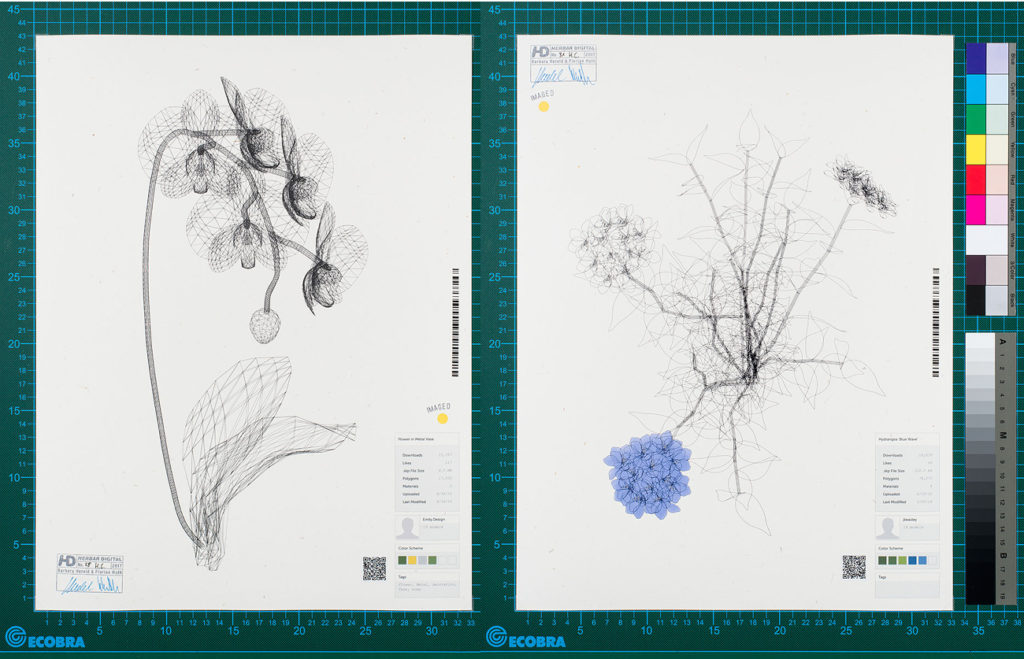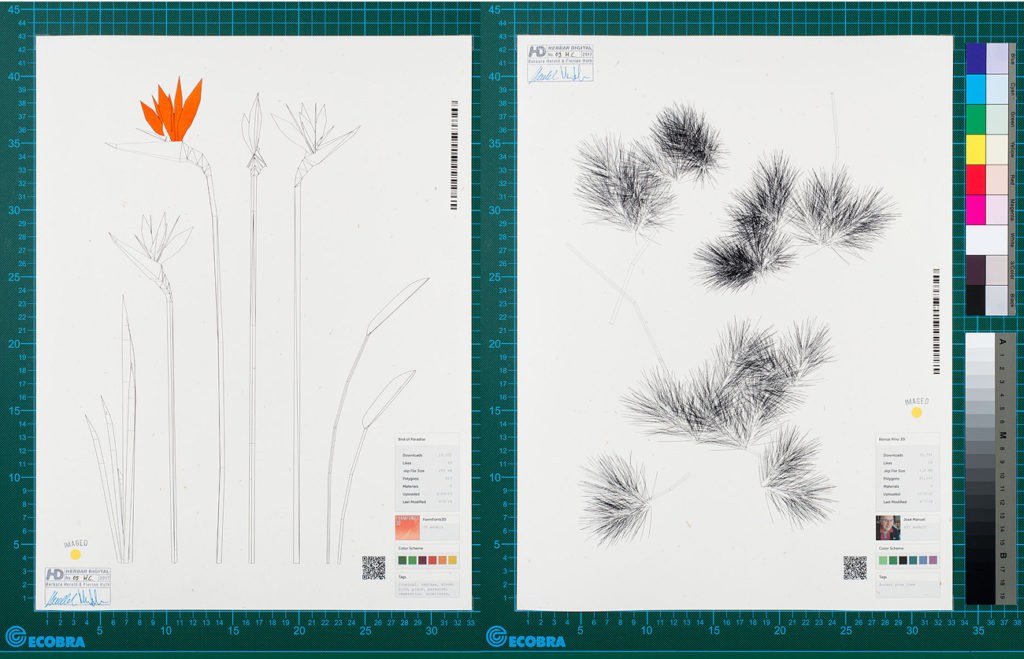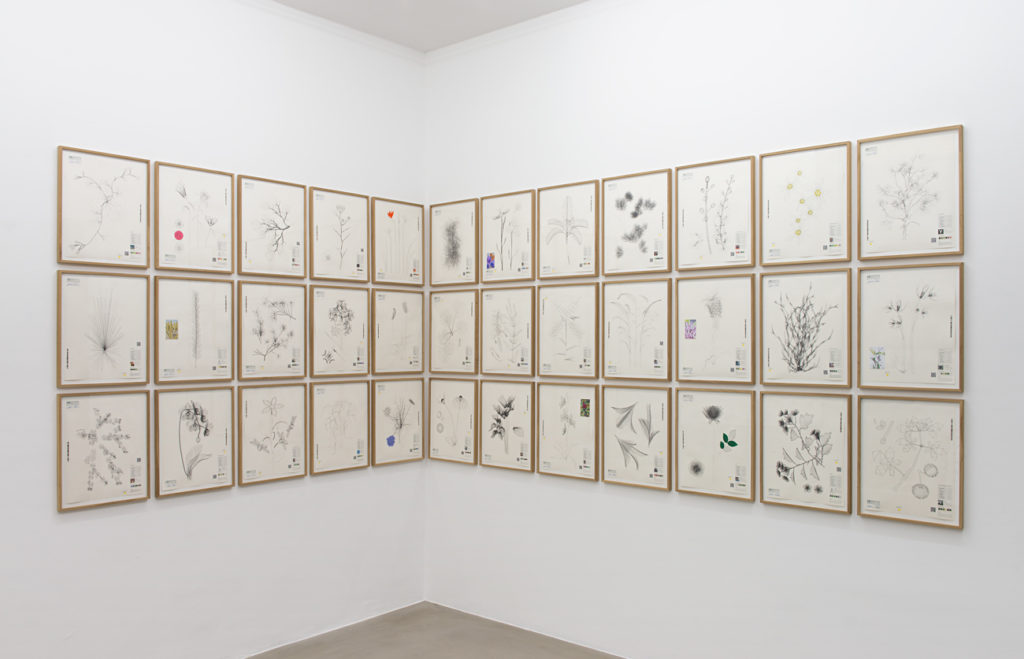One Thousand Leaves
Essay for Herbar Digital
Han Yan
„The universe is represented in every one of its particles. Every thing in nature contains all the powers of nature. (…) The World globes itself in a drop of dew.“
Ralph Waldo Emerson, Compensation
In Barbara Herold & Florian Huth's work Herbar Digital, leaves are a microcosm of the universe. Jagged lines, powerful curves, lively circles, dense nets: all these simple, geometric forms depict plants. They not only allude to our environment, but indeed serve as a model for it. Going a step further, the nature we experience is a microcosm of the universe.
Herbar Digital deals with Aristotle's properties of nature, i.e. matter and form. On the one hand leaves and flowers are nature's physical material (this refers to the physicality of nature), while on the other, the computer-generated parameters functioning as the work’s building blocks are to be regarded as nature's visual material. According to Aristotle, the form attained is the natural being. The basic structure of all plants in Herbar Digital can be understood as the construction of nature. In this case it is the combination of materiality on the one hand and the form on the other which makes up complete nature.
So how is nature interpreted in the visual world? This question occupies a determining position in Barbara's artistic work. In Void, nature represents the idyllic landscape, while in Herbar Digital, the herbarium replicates nature. Although the selection varies, the interpretation remains the same: a simulation. According to Gerhard Schulze, on this level computer-generated natural motifs may be seen as playful scenes not obscuring reality but instead producing it.
Of course, these scenes are bound to the cultural environment of human experience. The system of plants developed by Carl von Linné is regarded as an artificial classification in which human social practice informs plant identification. In Herbar Digital, 40 pieces of archival documentation emerge from 800 collected 3D models of plants. This subjective choice and the pseudo classification system created for it suggest a human approach; this artistic intervention reflects the overlap between real and virtual experiences within our digital age. Here, the playful backdrops stage the present.
The digital world is like a mirror in which we think we see the whole world. Yet in fact, we only see ourselves. In Herbar Digital each copy retains access to the digital source. Who designed the 3D model of this plant, what is its color scheme and so forth? The user-generated plants form thus leaves a strong personal trace. Humanity's individuality is a recurring concept in Barbara Herold's works. In Aura Sell-Out, the personality is reflected in the user's individual gestures, while in Metric Ballet the dancer's character can be recognized through improvisation within a limited space. The digital documents become a passage through which the diversity of people and nature is clear.
It is no coincidence that Herbar Digital was presented in a lithographic print series. This can be traced back to Maria Sibylla Merian's New Flower Book (1675 – 1680). The printing process focused on the shape and surface of plants and directed our attention to the interaction between observation, design and its purpose. The distinctive feature is that the scattered diffuse color in some editions is reminiscent of Merian's coloring. This artistic permutation lends the plants both liveliness and grace.
In conclusion Herbar Digital becomes a place where Herold & Huth show their intention: One thousand Leaves serves as a repository for our knowledge and as an archive of the memories of our time.



published: "Barbara Herold, Dekade", 2018, Munich
